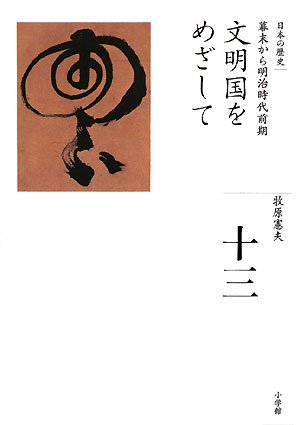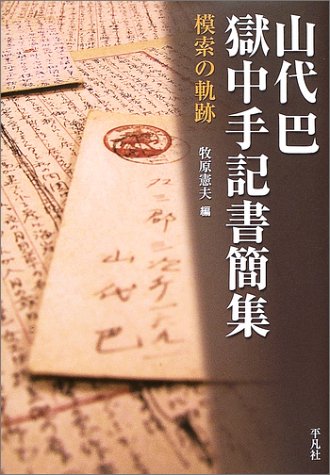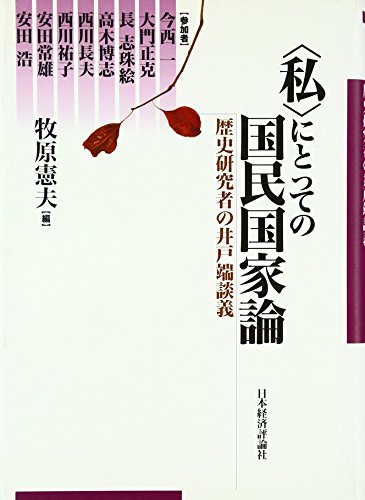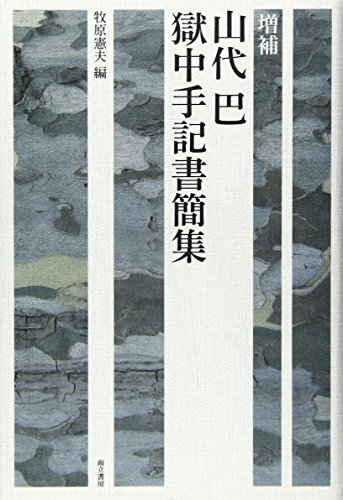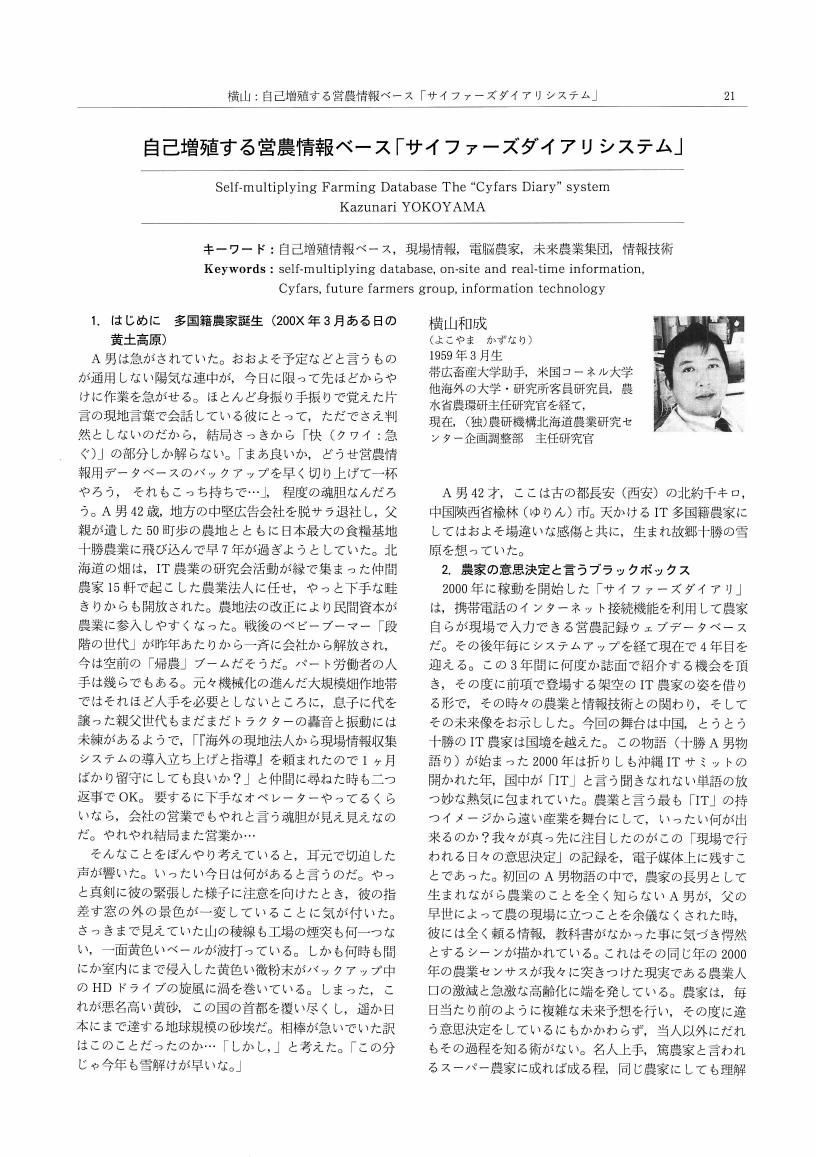1 0 0 0 山代巴獄中手記書簡集 : 模索の軌跡
1 0 0 0 「私」にとっての国民国家論 : 歴史研究者の井戸端談義
- 著者
- 牧原憲夫編 今西一 [ほか執筆]
- 出版者
- 日本経済評論社
- 巻号頁・発行日
- 2003
1 0 0 0 山代巴獄中手記書簡集
1 0 0 0 OA 大学生の一人暮らしにおける室内環境の実情
- 著者
- 高石 雅樹 渡邊 拓哉 浅野 哲
- 出版者
- 国際医療福祉大学学会
- 雑誌
- 国際医療福祉大学学会誌 = Journal of the International University of Health and Welfare (ISSN:21863652)
- 巻号頁・発行日
- vol.20, no.2, pp.48-58, 2015-08-25
単身者用アパートでは,単一の部屋が食事,勉強および睡眠等,複数の用途で使われるケースが多い.本研究では,アンケート(206/302人;回収率68.2%)にて一人暮らしを行っている大学生(131人)から住居の情報等を集めるとともに,一人暮らしをしている大学生4名の住居(ワンルーム3名と一戸建て1名)にて室内環境測定を行った.室内環境測定にて,室内温度,気湿,CO2濃度および照度が基準値を逸脱しているケースがあった.これらは,住宅の気密性の高さに起因すると考えられる.換気によりCO2濃度は低下したが,浮遊粉じん濃度はむしろ上昇した.また,換気方法による換気効果を比較したところ,窓のみの換気ではほとんど効果が認められなかった.そして,アンケートでは換気不足の人が多く,適切な方法,時間,頻度等を明確に提示することが重要であると考えられる.一方で騒音は,室内環境測定では基準値を満たしていたものの,アンケートにおいて他人が発し自分の生活リズムに合致しない騒音への不満が多く挙げられていた.このため,騒音と感じやすい音の種類や騒音が気になる時間帯等の情報を共有し,改善方法を検討することが重要である.したがって,一人暮らし環境の改善は自ら良好な環境の維持に努めるとともに,他の居住者との調和を考えて住環境を整えることが重要である.
- 著者
- 祐川 暢生
- 出版者
- 日本発達障害学会
- 雑誌
- 発達障害研究 : 日本発達障害学会機関誌 (ISSN:03879682)
- 巻号頁・発行日
- vol.42, no.3, pp.206-215, 2020-11
- 著者
- 渡辺 靖
- 出版者
- Japan Oil Chemists' Society
- 雑誌
- 油化学 (ISSN:18842003)
- 巻号頁・発行日
- vol.27, no.3, pp.169, 1978-03-20 (Released:2009-11-10)
- 参考文献数
- 6
The anti-dandruff and anti-itching effects of zinc pyrithione were investigated in the clinical study in connection with the residual amount of the agent on the hair.The dandruff and the itch decreased significantly by using a zinc pyrithione-containing hair rinse. The residual amount of zinc pyrithione on the hair rose with the increase of the content in a hair rinse. The more the agent remained, the more the antidandruff and anti-itching effects were found.The fact that the shampoo containing 1% of zinc pyrithione had the effects equivalent to the hair rinse containing 0.3% was relevant to its residual amount on hair.
1 0 0 0 集中治療後症候群(PICS)とは
集中治療後症候群(PICS)とは? PICS(ピックス)とは,post intensive care syndromeの略で,集中治療後症候群といったような日本語訳になる言葉である.PICSについてのはっきりとした定義はない.2012年に集中治療にかかわるステークホルダーを一堂に揃え行われたカンファレンスの報告によれば1),「重症疾患後に身体,認知,メンタルヘルス状態に関する新しい障害が観察された,または障害が悪化し,継続する状態」を指し,そして,この用語は患者(PICS)だけではなく,その家族(PICS-F)にも適応できるとされる. PICSにはいくつかのドメインがあり,その症状ごとに,図1のようにまとめられている.呼吸機能障害,筋神経系障害などを含む身体機能障害,認知機能障害,うつ・不安・心的外傷後ストレス障害(post traumatic stress disorder:PTSD)を含むメンタルヘルス障害,家族にみられる精神症状(post intensive care syndrome-family:PICS-F)に分けられる.
1 0 0 0 OA チェンバレン『日本事物誌』の各版にみられる日本語語彙
- 著者
- 早川 勇
- 出版者
- 愛知大学語学教育研究室
- 雑誌
- 言語と文化 : 愛知大学語学教育研究室紀要 = language and culture (ISSN:13451642)
- 巻号頁・発行日
- vol.36, no.9, pp.141-163, 2003-08
1 0 0 0 OA クィア理論と日本文学ークィア・リーディングの可能性と実践
1 0 0 0 OA 京都市におけるコンビニエンスストアの立地展開
- 著者
- 荒木 俊之
- 出版者
- The Human Geographical Society of Japan
- 雑誌
- 人文地理 (ISSN:00187216)
- 巻号頁・発行日
- vol.46, no.2, pp.203-213, 1994-04-28 (Released:2009-04-28)
- 参考文献数
- 42
- 被引用文献数
- 8 1
1 0 0 0 OA 建築写真類聚
- 著者
- 建築写真類聚刊行会 編
- 出版者
- [洪洋社]
- 巻号頁・発行日
- vol.第1期 第15 (寝室及化粧室), 1920
- 著者
- 政木 哲也 長坂 大
- 出版者
- 日本建築学会
- 雑誌
- 日本建築学会計画系論文集 (ISSN:13404210)
- 巻号頁・発行日
- vol.83, no.749, pp.1173-1182, 2018 (Released:2018-07-30)
- 参考文献数
- 22
- 被引用文献数
- 3 1
In this study, we have surveyed the spatial configuration and distribution of Jizo (stone statue of Buddhist god) found within the limits of public housing in Kyoto city, and analyzed them in order to consider the transformation of common space by manners brought in by the residents. Jizo in urban areas is common mainly in the Kansai district. In the case of central Kyoto, citizens have traditionally formed religious urban spaces for the local community by enshrining Jizo on the streets. Kyoto suffered a serious housing shortage caused by the rapid population flow during the post WW2 era and the high economic growth period. Major suburban housing developments were accelerated to solve this issue. This led to many residents living in a whole new modern urban space. On the occasion of developing their own community, they have brought in their religious customs, including Jizo. Danchi-nai-Jizo (Jizo inside public housing) is still largely unexplored; a field research was conducted in order to clarify the present condition of every Danchi-nai-Jizo. This research includes recording their locations and orientations among the site. The total number of surveyed Danchi is 148 including three different housing categories; municipal housing, prefectural housing and rental apartments built by Japan Housing Corporation (JHC). As a result, 55 of these Danchi included Danchi-nai-Jizo. Our analysis of geographical distribution shows that Danchi-nai-Jizo can be found in every ward of Kyoto except Kamigyo-ward and more in suburban Danchi than ones in the central area. Some specific areas were found where many Danchi-nai-Jizo gather densely. Our analysis of chronological distribution of Danchi-nai-Jizo linked with construction year of each development, clarified that Danchi-nai-Jizo exists widely from the old Danchi to the new. They were both found in larger Danchi, most built in the 60's and early 70's, and smaller ones built after the 80's. Focusing on Danchi-nai-Jizo within common spaces, three pattern types, “Apartment type”, “Danchi type” and “Neighborhood type”, were derived through analysis of space configuration. This corresponds to three different scales of community space. The “Apartment type” is the configuration of Danchi-nai-Jizo that is placed close to the residents nearby the apartment building, at the center of a small unit of community space. Danchi-nai-Jizo for “Danchi type” is usually located inside or around the square facing towards the empty space. In this case, the Danchi-nai-Jizo is at the center of community space for the entire Danchi. “Neighborhood type” describes the Danchi-nai-Jizo on the border of the housing development. This configuration looks similar to Jizo seen on the streets in central Kyoto, but this Danchi-nai-Jizo has less relation to the Danchi it self. Danchi-nai-Jizo is an informal act by the residents, but it has been accommodated in the Danchi space for decades. The “Apartment type” Danchi-nai-Jizo has fit in a small excess space around the resident access path and more accommodation is found in these common spaces. In the case of “Danchi type”, it is about how Danchi-nai-Jizo was accepted and how it replaced the original function of the open space. “Neighborhood type” showed how Danchi space accommodates to the surrounding neighborhood. In conclusion, it is safe to say that Danchi-nai-Jizo has existed despite the transformation of Danchi space, and flexible and accommodating nature in Danchi was clarified through the existence of Danchi-nai-Jizo seen in various types of common spaces.
1 0 0 0 OA 生活環境不利地域におけるまちづくりの展開と地域形成 -京都市近郊農業地域を対象として-
- 著者
- 池島 祥文 三輪 仁
- 出版者
- 日本地域経済学会
- 雑誌
- 地域経済学研究 (ISSN:13462709)
- 巻号頁・発行日
- vol.21, pp.2-23, 2010 (Released:2020-05-07)
1 0 0 0 OA 自己増殖する営農情報ベース「サイファーズダイアリシステム」
- 著者
- 横山 和成
- 出版者
- The Japanese Society of Agricultural Machinery and Food Engineers
- 雑誌
- 農業機械学会誌 (ISSN:02852543)
- 巻号頁・発行日
- vol.66, no.4, pp.21-25, 2004-07-01 (Released:2010-04-30)
- 被引用文献数
- 2
1 0 0 0 OA 「日本地図化」の総力戦 : 第二次世界大戦期、米軍の対日爆撃標的地図作成
- 著者
- 高田 馨里
- 雑誌
- 大妻比較文化 : 大妻女子大学比較文化学部紀要 = Otsuma journal of comparative culture (ISSN:13454307)
- 巻号頁・発行日
- vol.21, pp.67-90, 2020-03-01
- 著者
- 政木 哲也 長坂 大
- 出版者
- 日本建築学会
- 雑誌
- 日本建築学会計画系論文集 (ISSN:13404210)
- 巻号頁・発行日
- vol.84, no.763, pp.1871-1881, 2019 (Released:2019-09-30)
- 参考文献数
- 18
In this study, we have surveyed the distribution and spatial spread of Jizo-bon (ceremony of Jizo =stone statue of a Buddhist god) found within the limits of public housing located in eastern suburb of Kyoto city, and analyzed them in order to consider the nature of common space used for ceremonies held by the residents. Jizo-bon is a ritual ceremony common mainly in the Kansai area, held in 24th August, the ceremonial day of Jizo-bosatsu (A god of Buddhism). While Jizo-bon is composed by several events, the most important section is the Buddhist chant and lecture provided by the priest. In the ceremony, prayers will gather around the Jizo to pray with the priest. Our study focuses on the behavior of this ceremonial area. Jizo-bon inside public housing is still largely unexplored; a field research was conducted in order to clarify the present condition of every Jizo-bon held inside public housing in the eastern suburb of Kyoto city. The scope of the survey was aimed at public housings located in Yamashina-ward and eastern Fushimi-ward. The history of this area is relatively short compared to central Kyoto. Urban development experienced rapid growth in the post WW2 era and during the high economic growth period. Major housing development led the growth of population of this suburban area. In our last study, we have pointed out these suburban areas are the specific areas in Kyoto where large amount of Danchi-nai-Jizo (Jizo inside public housing) were found. Research of Jizo-bon in this area will highlight the traditional manners within the modern habitation environment. Jizo-bon was identified in 17 public housings, out of 19 (with Danchi-nai-Jizo). 11 were found in Yamashina ward and 6 were in the eastern Fushimi area. There was a clear correlation between the housings with Danchi-nai-Jizo and the ceremony. We confirmed that these Danchi-nai-Jizo were mainly placed for the Jizo-bon festival. We found three pattern types identified based on its position, “Open-air”, “Pilotis”, and “Halls”. These types were derived through analysis of chronological configuration. In massive housings built by the early 70s, small sized “Open-air” Jizo-bon, the ceremony held outdoors at the Jizo location, were typical. During this era, social interest of Jizo-bon grew throughout the city, and the performance of ceremonies become bigger and grander in scale. Jizo-bon in “Halls”, the ceremony performed indoors of the hall in public housing, were found during this era. Public housing built in each era tend to carry and maintain their own Jizo-bon until today. This explains the various forms of Jizo-bon we see. Spatial analysis of the ceremonial areas within common space brought out two specific behaviors; “diverse” and “traverse”. “Diverse” explains the original purpose and function of common space diverted into ceremonial use. “Traverse” explains the crossover use of various common space, while temporarily neutralizing the borders within. The loose articulation among the common space sustains the use of various Jizo-bon in public housings. Tents, mats and lanterns are usually placed around the Jizo during the ceremony. These temporary elements make the everyday common space into the ritual space. This shows that Jizo-bon in public housing is an event that the common space overlaps the extraordinary. In conclusion, it is safe to say that loose articulation found among common space in public housings, carries and sustains the various ways of common use by the community, such as the Jizo-bon.
1 0 0 0 OA トピックモデルによる関西私鉄沿線の特徴分析
- 著者
- 前田 侑亮 金 明哲
- 出版者
- 情報知識学会
- 雑誌
- 情報知識学会誌 (ISSN:09171436)
- 巻号頁・発行日
- vol.29, no.1, pp.3-22, 2019-02-28 (Released:2019-03-15)
- 参考文献数
- 22
- 被引用文献数
- 1
関西都市圏は「私鉄王国」と呼ばれており,関西5私鉄(近鉄・京阪・南海・阪急・阪神)は競って沿線を開発し,関西都市圏の街づくりの一角を担ってきた.本研究では,関西5私鉄の沿線を文化的価値の側面から定量的に分析し,沿線の特徴を明らかにすることを目的とする.分析においては,どの駅勢圏にどの文化施設等が何回出現したかという頻度行列を作成し,そのカウントデータが持つ情報そのものに焦点を当てられるトピックモデルLDAを用いた.分析の結果,関西5私鉄の沿線には6つの特性が潜んでいると分かった.また,これらの特性を整理し各社の主要路線を分類すると,「歴史的な沿線を持ち,地域密着型の商業地域が目立つ路線」,「都心とその間の郊外を結び,良好な生活環境が整備された路線」,「都心と文教地区を走り,通勤通学の足としての性格が強い路線」の3つに分けることができた.
